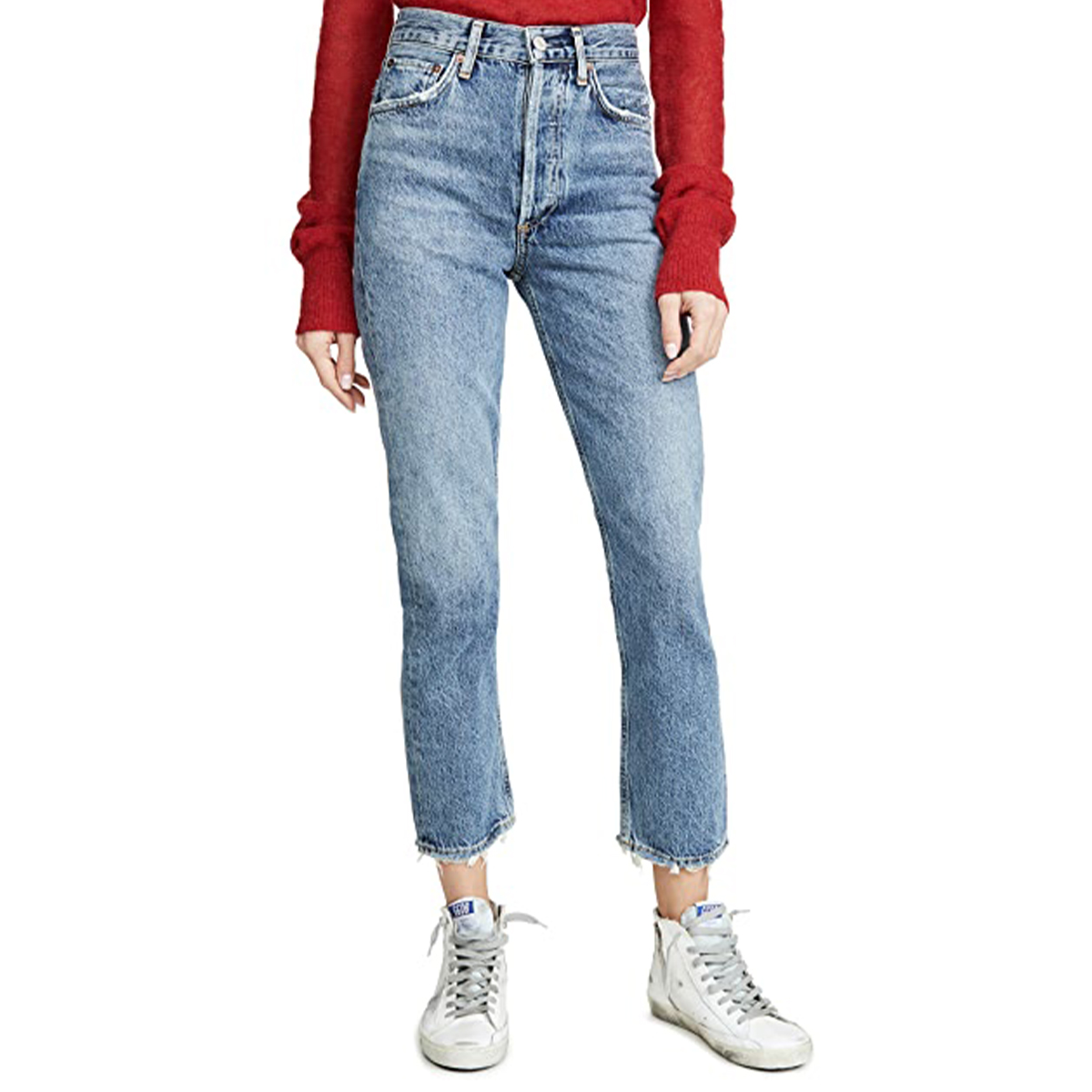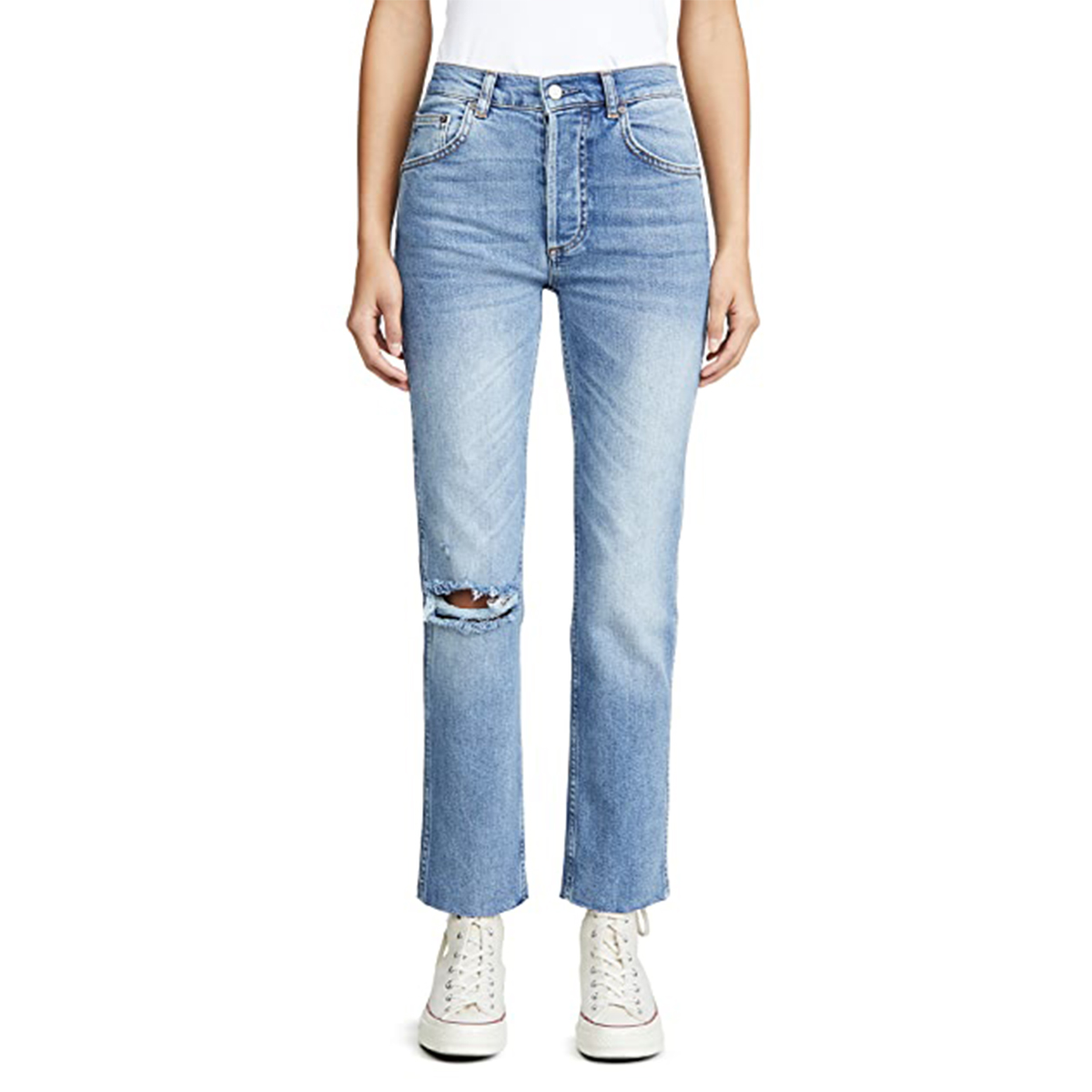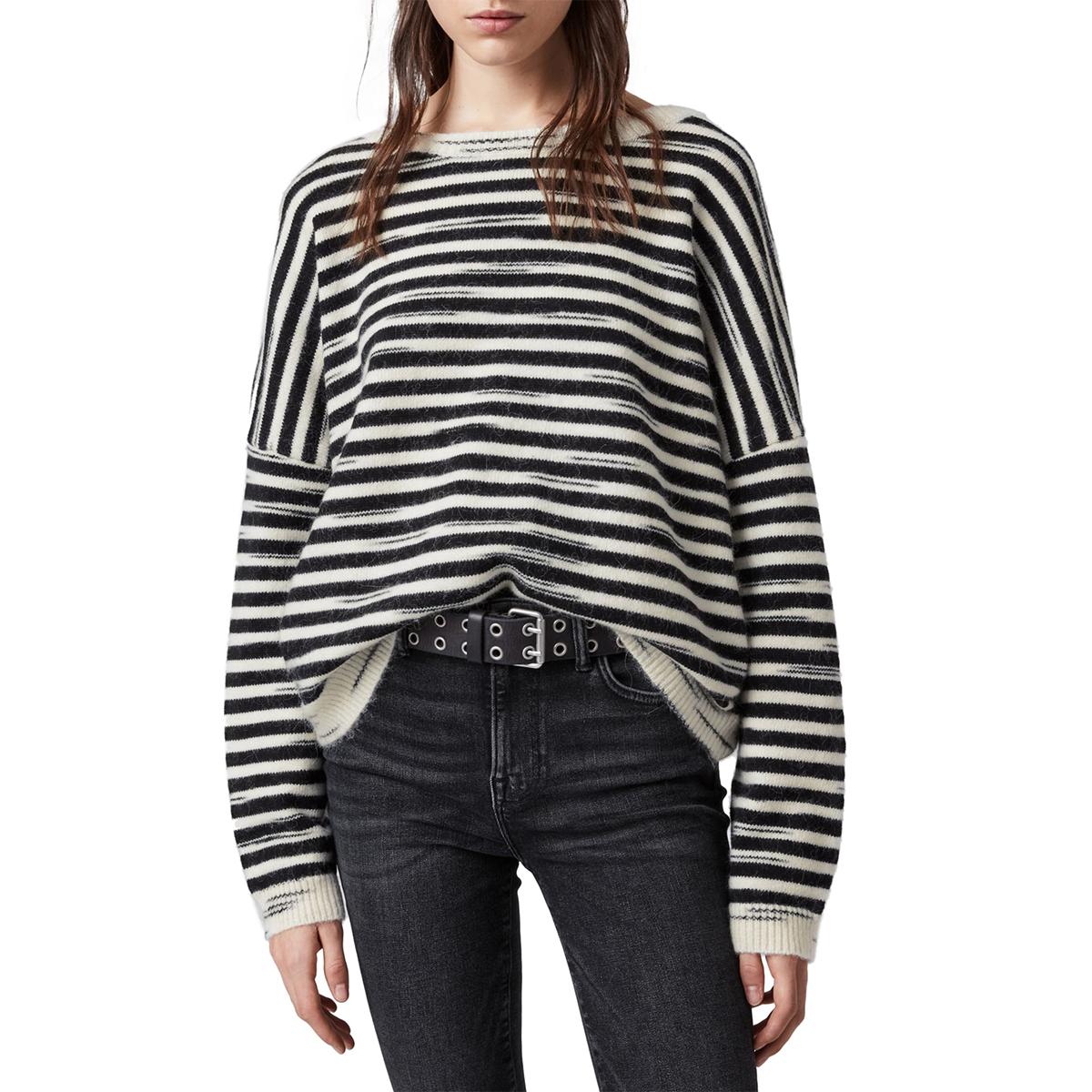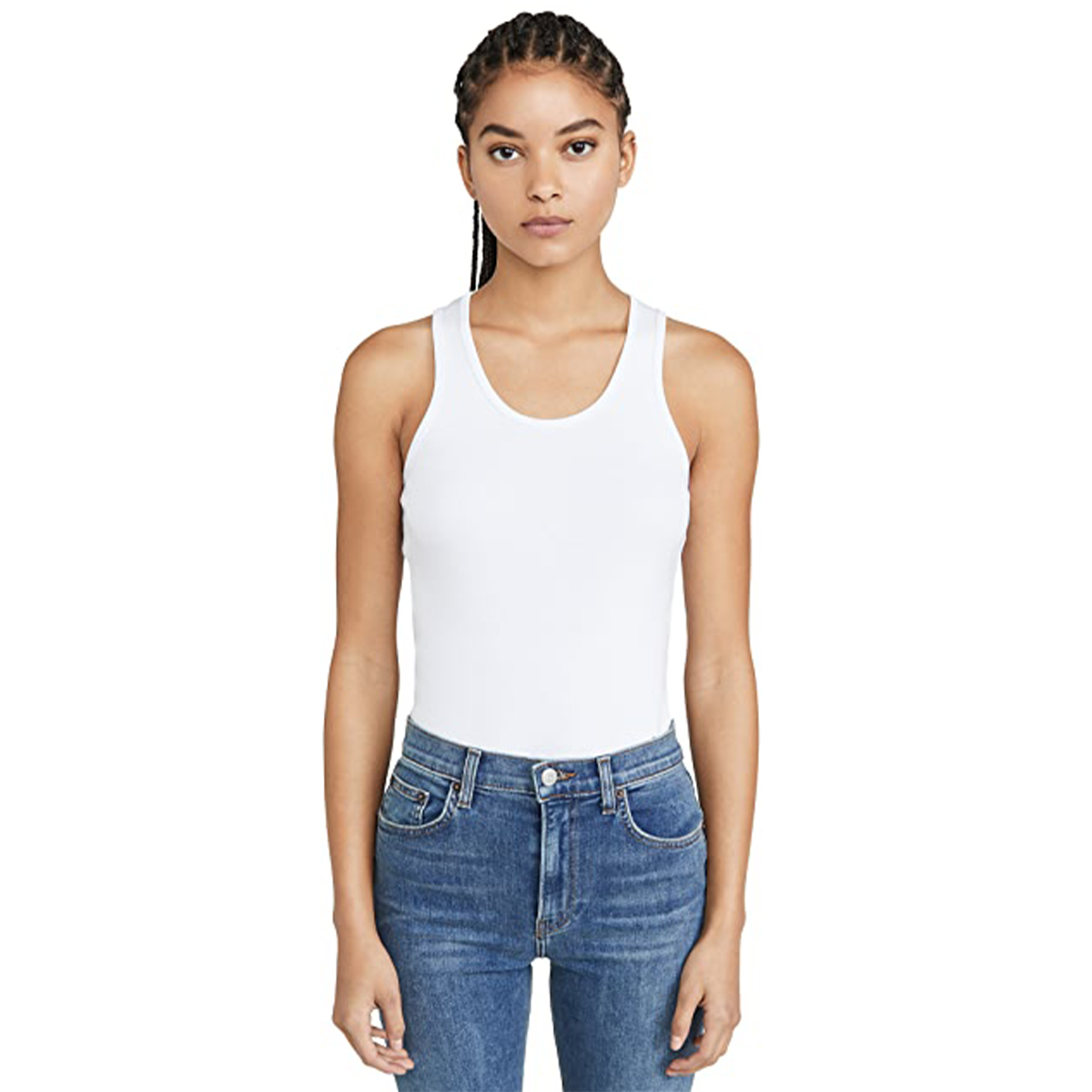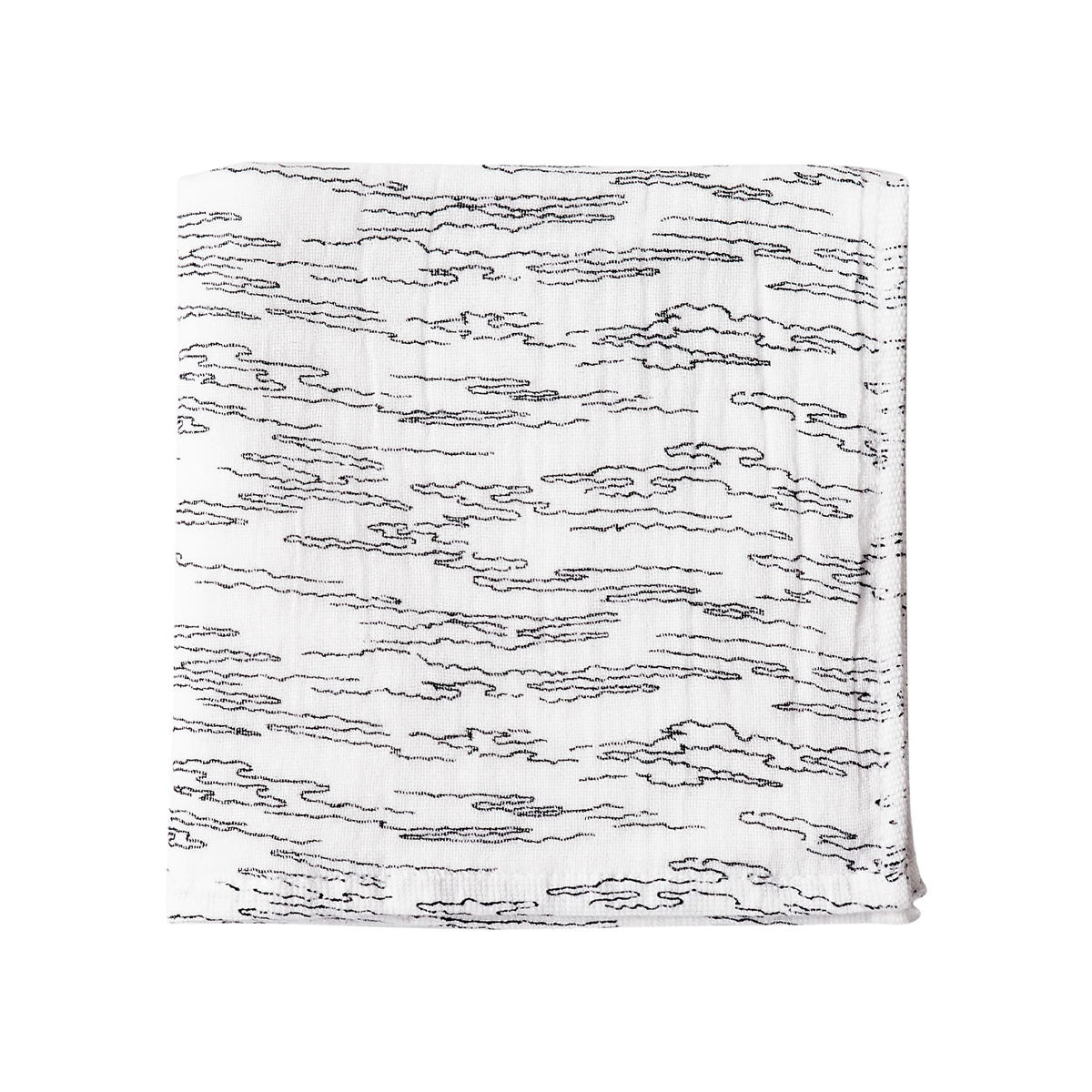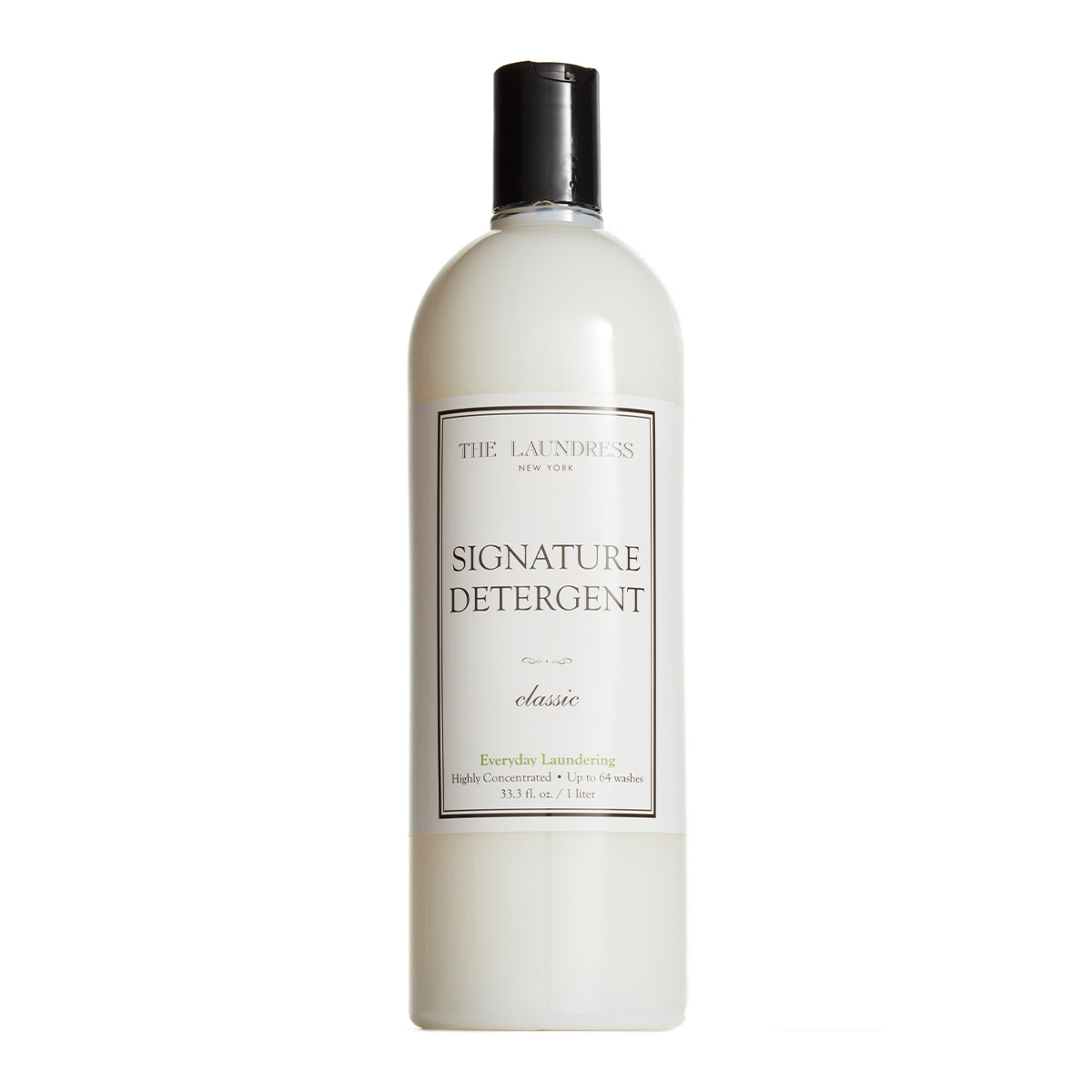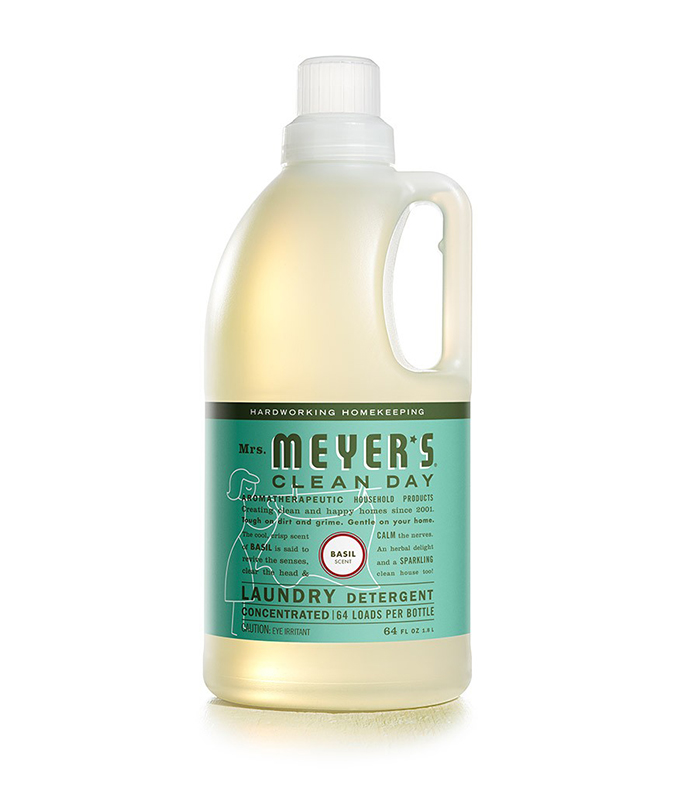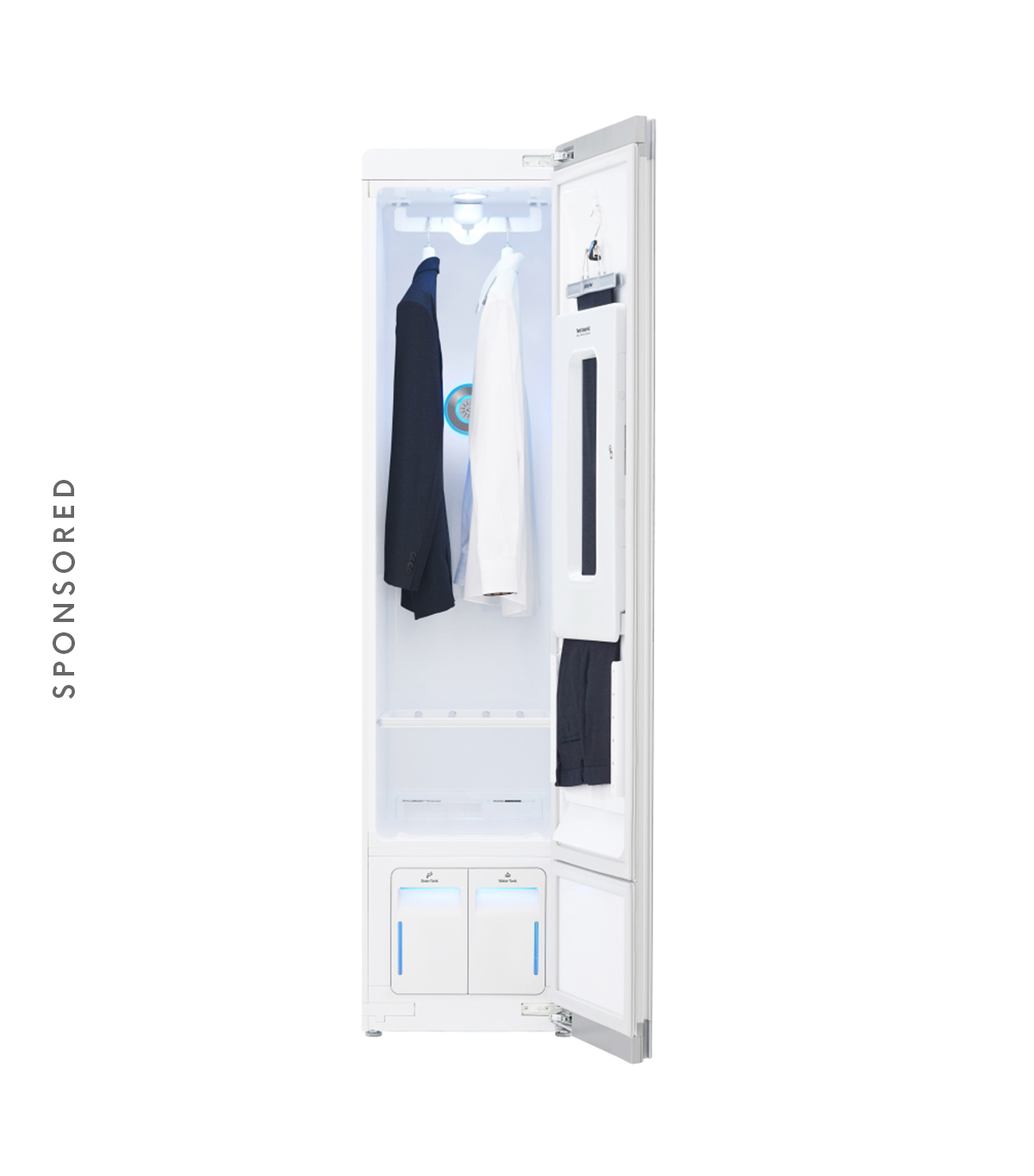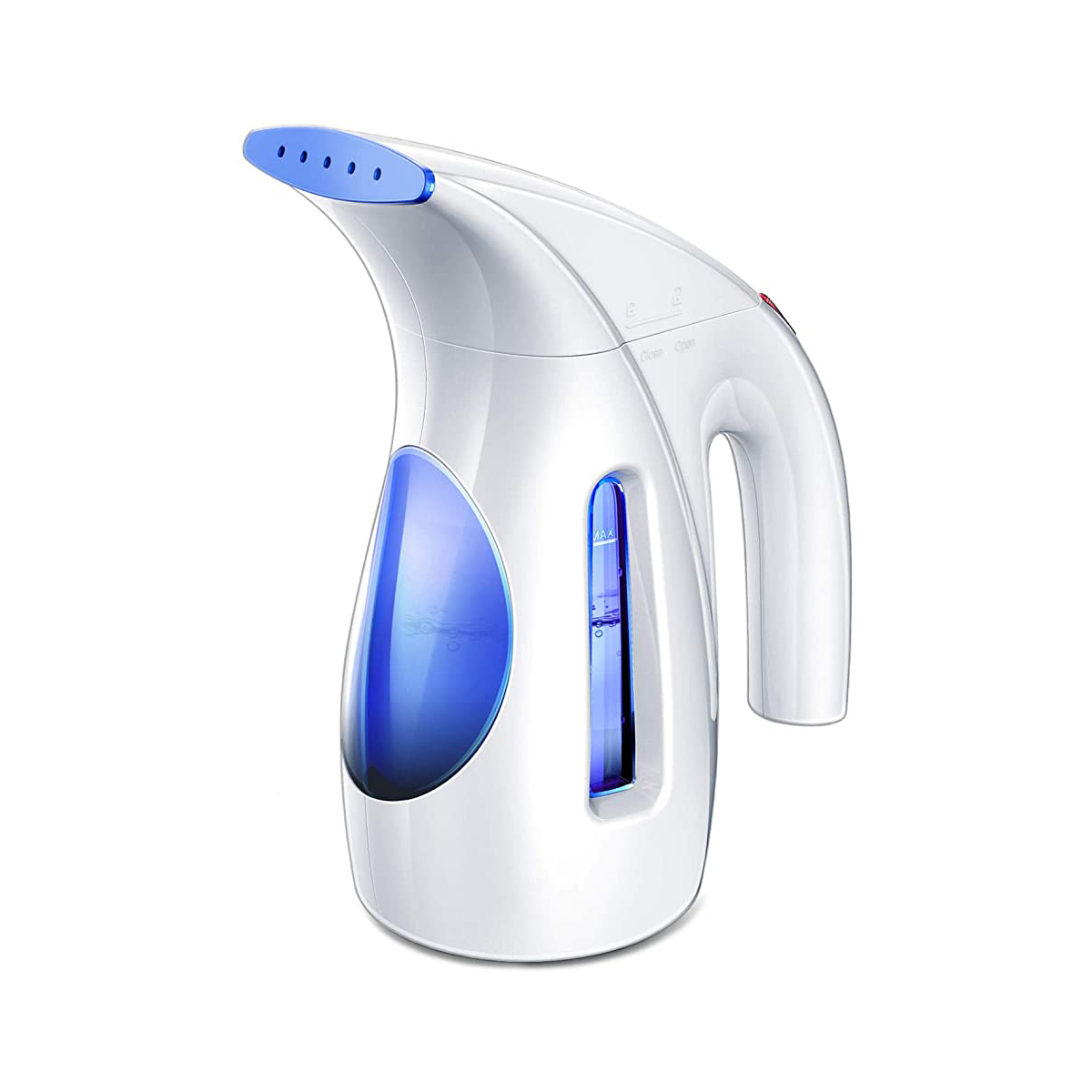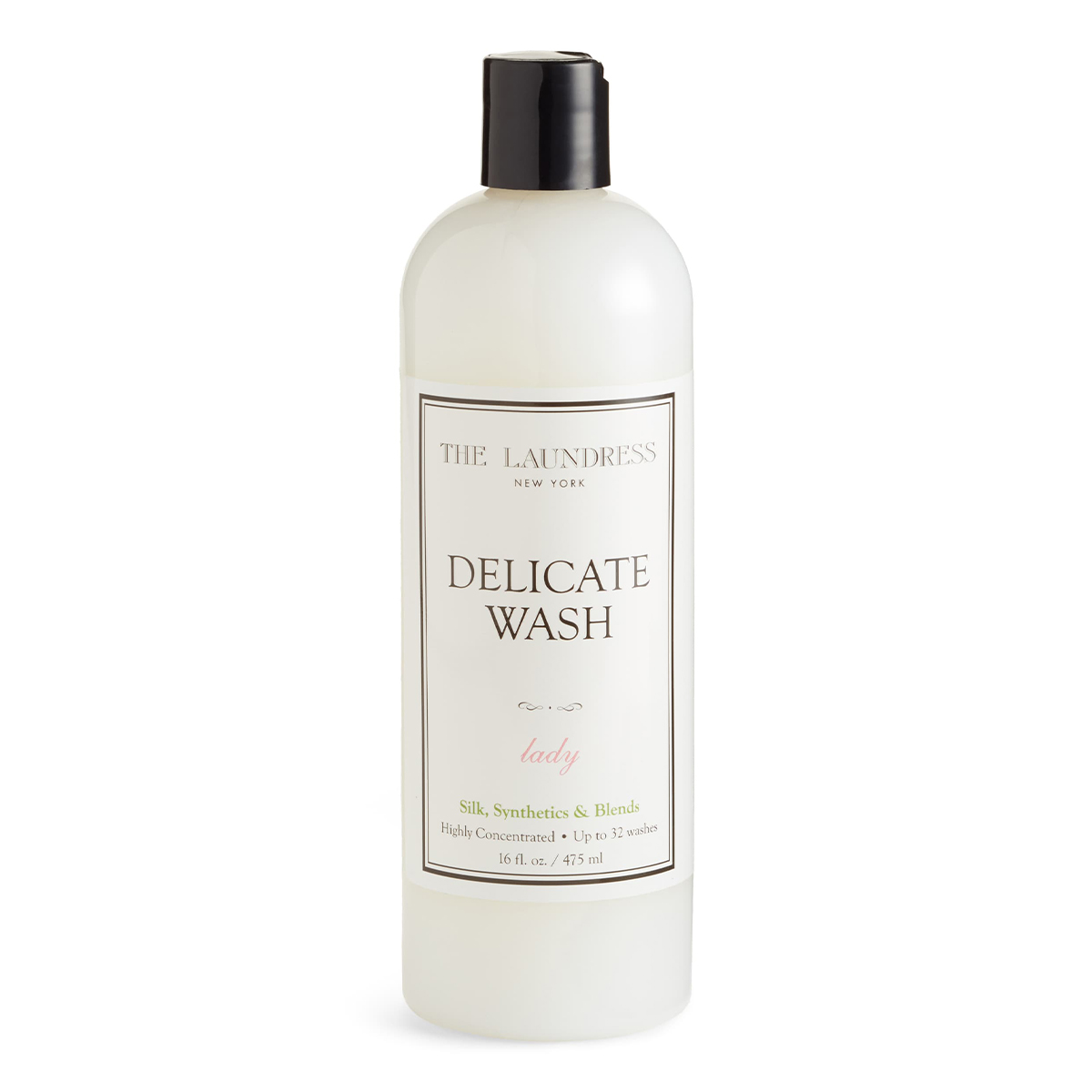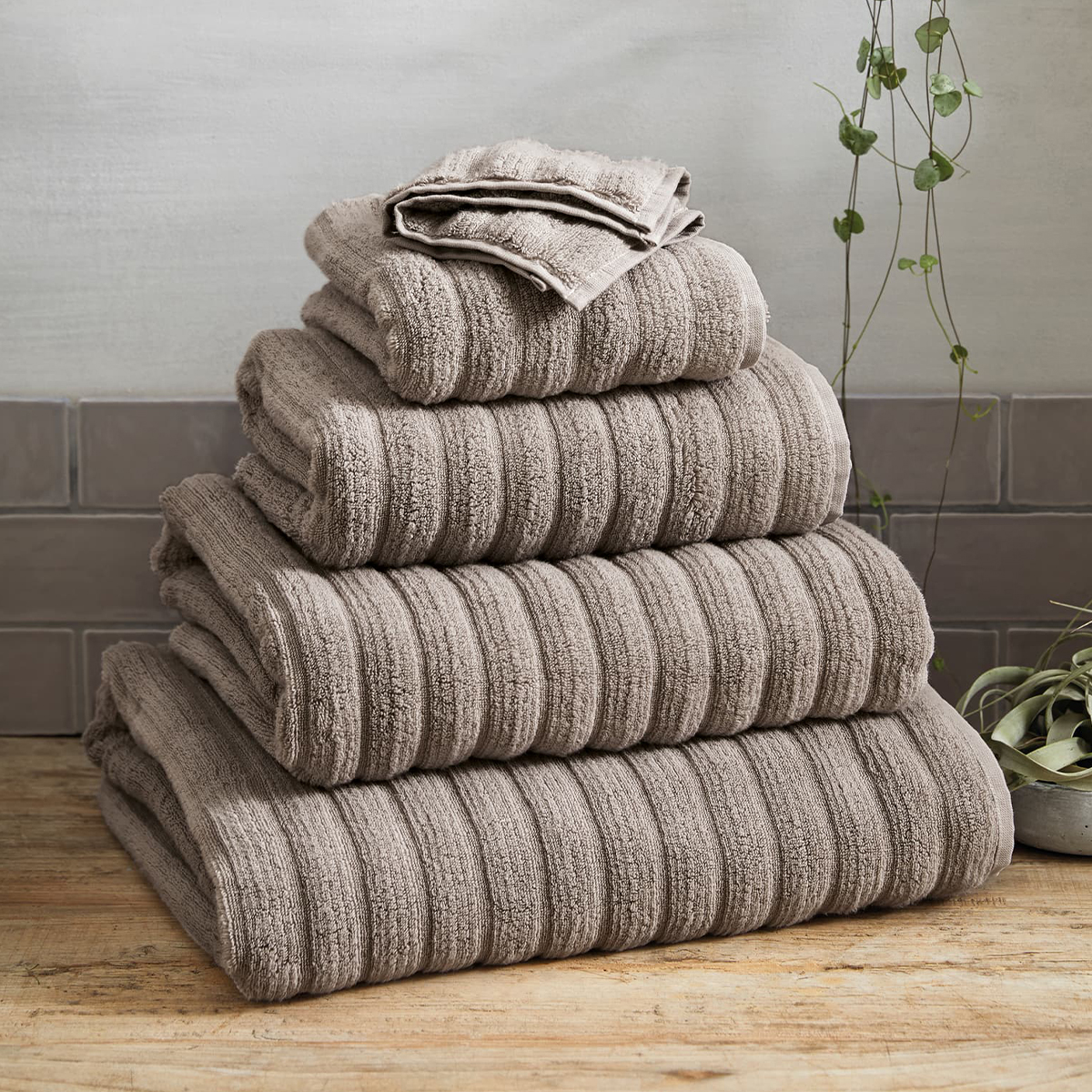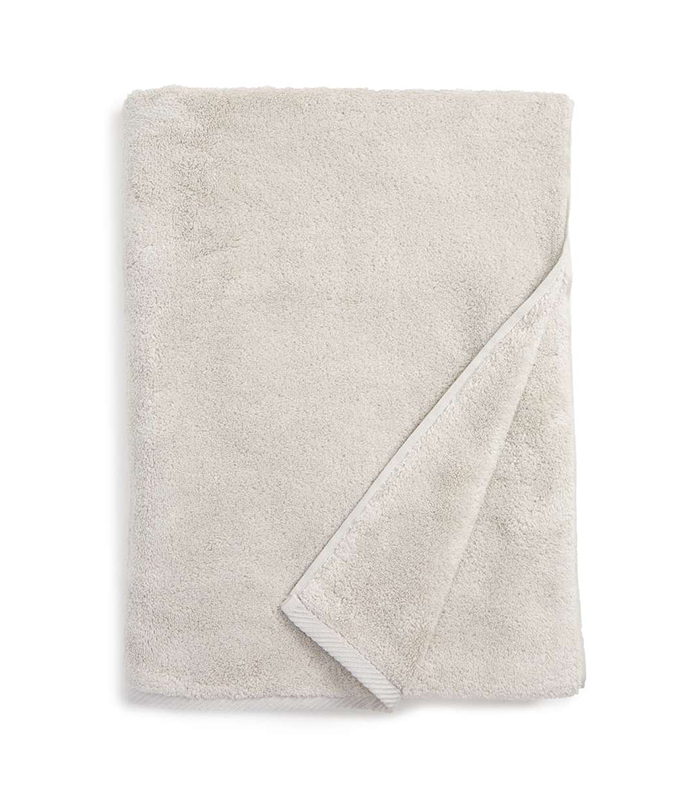The Official Dos and Don'ts of Washing Your Clothes

Once we've invested in a timeless piece of clothing, we want that item to last us through the years. Be it your everyday T-shirt collection or favorite pairs of jeans, these staple pieces deserve to stay in tip-top shape so you can lean on them for a number of occasions and look forward to wearing them every time. The number one way of extending the life of your wardrobe is to properly care for each and every piece. For those that call for being washed in a machine instead of dropped off at the dry cleaner, particular care and attention are essential. Below we've outlined a precise step-by-step guide for how to wash clothes so you can keep your brights bright, darks dark, and delicates looking brand new.
Prep: Check Labels
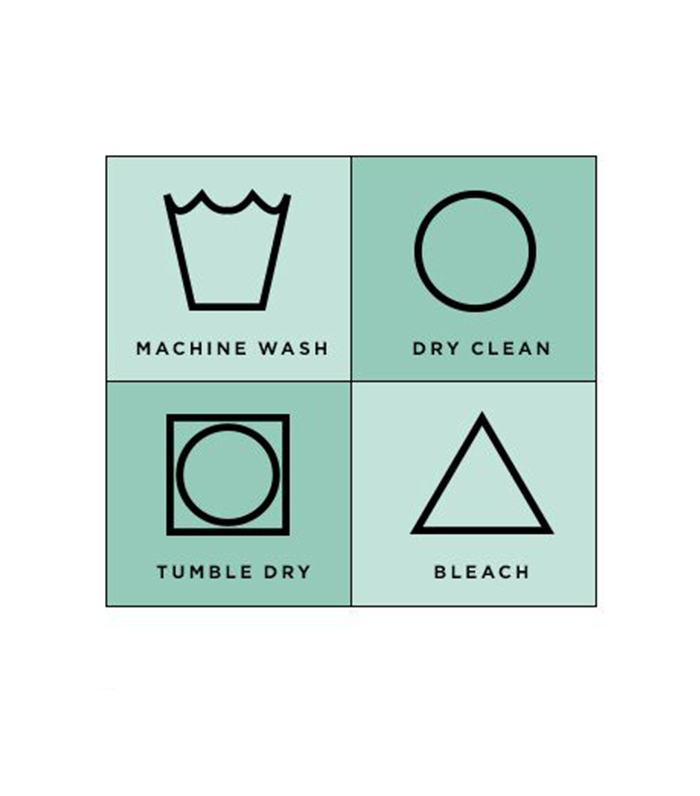
Decoding the symbols on clothing labels can feel a lot like taking a test, one that you definitely don't want to fail. Here's what you need to know to pass with flying colors:
1. The machine-wash symbol refers to the temperature that should be used to wash the item. If the symbol contains one dot, you wash in cold; two dots, you wash in warm; three dots, you wash in hot. If there is an X over the symbol, head to your nearest dry cleaners.
2. The bleach symbol refers to whether or not you should use chlorine bleach. If it's a plain white triangle, proceed with caution; if there is an X over it, then steer clear of bleach!
3. The tumble-dry symbol refers to drying methods. A white circle indicates you can use any heat, one dot means use a low temperature, two dots is for normal temperature, and three dots mean high temperature.
4. The dry-clean symbol indicates just that: whether or not you need to dry clean the piece. If you see a big X, that's your cue to use the washing machine.
Prep: Separate and Treat
Separate your laundry into four piles: whites, lights, darks, and delicates. (Note: If you want to reduce the number of loads, you can combine whites and lights.)
Prep: Last-Minute Check
Make sure to empty out all pockets, close zippers to prevent snagging, turn denim and embellished pieces inside out, pretreat any stains, and put your delicates (underpinnings, lingerie, tights, and anything with lace) in mesh bags.
Washing: Cold Water
Cold water is good for fine fabrics and delicates, sweaters, denim, and clothes that may shrink. It also protects new items with dark and bright colors from running.
Washing: Warm Water
Warm water works best with whites and lights. Combined with detergent, the water temperature helps lift soil and stains while removing bacteria.
Washing: Hot Water
Hot water is the best choice for heavily stained items and disinfecting washcloths and dish and bath towels.
Washing: Detergents
1. Color-safe bleach works on all colors and helps removes stains. (Note: This does not disinfect your clothing like chlorine bleach.)
2. Chlorine bleach helps brighten whites. You should never use it on color fabrics! If your machine does not have a bleach dispenser, make sure to dilute the bleach with water first before putting it on your clothes.
3. Fabric softener is a conditioner that keeps towels soft and fluffy and prevents static cling.
Washing: Filling the Machine
Step One. Start filling the machine with water.
Step Two. Once the machine is a third full of water, add detergent and/or bleach.
Step Three. When the detergent and bleach are completely dissolved in the water, add your clothes. The maximum load size is three-quarters full.
Washing: Cycles
1. Regular or normal combines fast agitation with a fast spin cycle and is good for heavily stained items, cotton, linen, denim, towels, and bedding.
2. Permanent press combines fast agitation with a slow spin and is good for synthetic fibers (knits and polyesters) and prevents wrinkling.
3. Delicate cycle combines slow agitation with a slow spin and is good for washable silks and wools, garments with embellishments, lingerie, and sheer fabrics.
Washing: Steam Cleaning
1. Use when you need to quickly refresh any garments and release wrinkles. This machine extends the appearance of clothing between dry cleanings by removing unwanted creases and odors. Perfect for blazers, blouses. and pleated pants that you can’t wash often but wear frequently.
2. Found a vintage gem? Use the gentle dry cycle to ensure the piece you scored is clean and ready to wear without ruining the delicate material.
3. Steam cleaning your clothes periodically will also reduce any allergens that cause irritation because of the TrueSteam technology in the LG Styler, which has been certified by the Asthma and Allergy Foundation of America.
Washing: Handwashing
Fill a kitchen or bathroom sink with cool or warm water and a little detergent. Let your delicates soak for 15 to 20 minutes and then rinse in clear water two to three times. Hang dry.
Drying: Cycles
1. Regular (high heat) setting is good for whites, jeans, towels, sheets, linens, and items that are preshrunk. Do not use this setting with clothing washed in hot water.
2. Permanent press (medium heat) setting prevents colored garments from fading and ensures your clothes do not wrinkle or lose their shape. Do not use this setting for delicates because they will lose their shape.
3. Delicate (low heat) setting uses a slower speed to gently dry fragile clothing and is good for knits and fragile fabrics.
Drying: Hang or Flat Drying
Hang drying is the best method for sturdy items, cottons, polyesters, silks, and fabrics that do not stretch. A good tip is to pin your tops by the hemline to avoid bunching at the shoulders. Knits and wool sweaters should be dried on a flat surface.
Drying: Quick Tricks
1. Throw a clean, dry towel in the dryer with wet clothes. The towel will help absorb the moisture, allowing the clothing to dry much quicker.
2. If clothes are dry but wrinkled—a case of letting them sit in the dryer for too long—toss in a clean, damp towel and turn on the dryer for 15-minute intervals until wrinkles are gone.
Up next, this is exactly how to wash clothes by hand.
This story was published at an earlier date and has been recently updated.

Jessica Baker has 16 years of experience in the digital editorial fashion and entertainment space. She is currently the Executive Director, Entertainment atBest Knockoff Luxury Clothing where she ideates, books, writes, and edits celebrity and entertainment features.
-
 Exactly What to Buy Your Boyfriend or Husband to Make Him Just a Little Bit More Stylish
Exactly What to Buy Your Boyfriend or Husband to Make Him Just a Little Bit More StylishFashion Director Joseph Tang shares his foolproof advice.
-
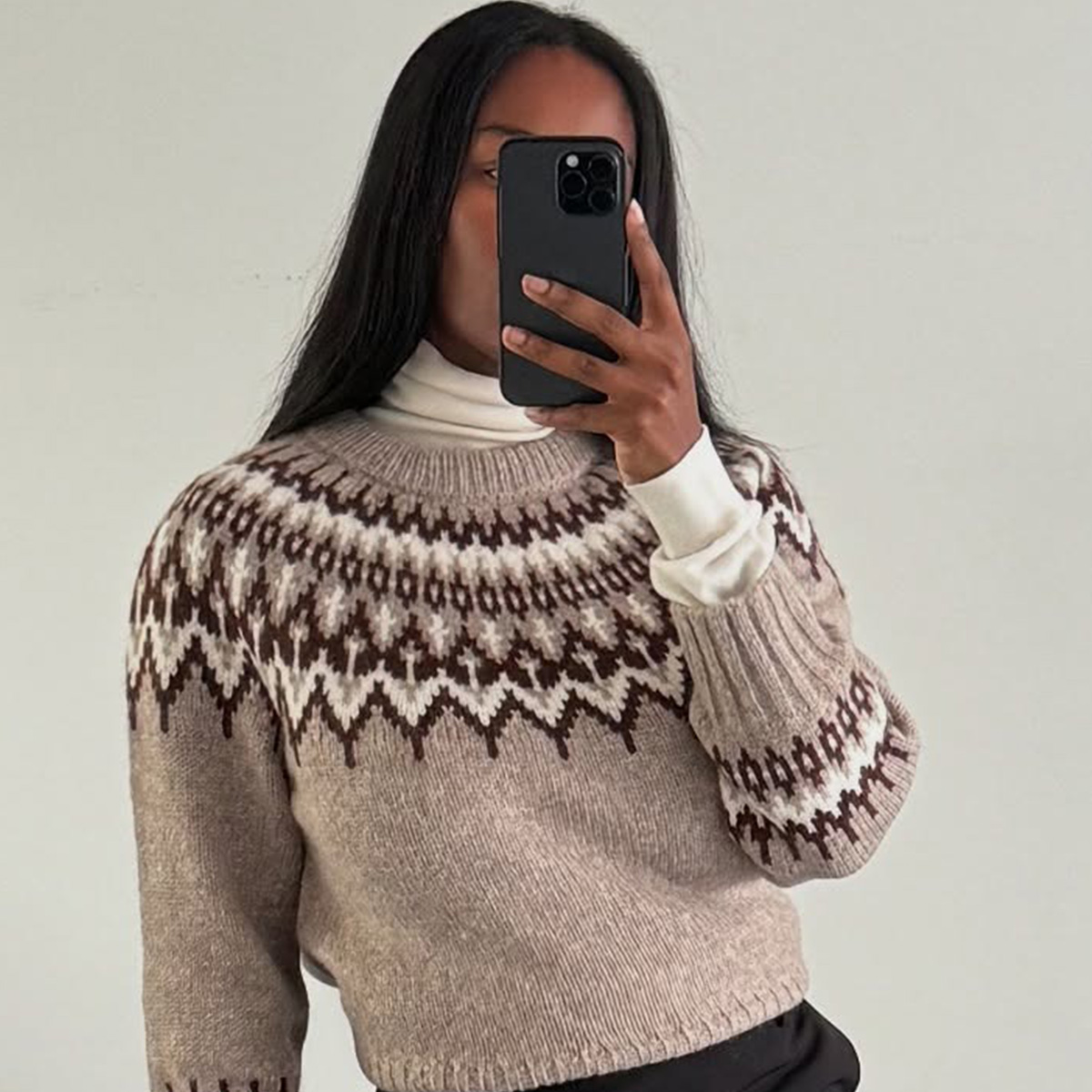 Sorry, Crewneck Tees—in 2026, Everyone With Taste Will Be Layering Sweaters Like This
Sorry, Crewneck Tees—in 2026, Everyone With Taste Will Be Layering Sweaters Like ThisThe recipe for a perfect winter outfit.
-
 The Ashley Olsen Way to Make Simple Black Coats Look Chic, Not Boring
The Ashley Olsen Way to Make Simple Black Coats Look Chic, Not BoringIt's so easy, yet so impactful.
-
 Looking Stylish This Fall Means Wearing Your Pretty Dresses With This Unexpected Item
Looking Stylish This Fall Means Wearing Your Pretty Dresses With This Unexpected ItemHere's how to master the look.
-
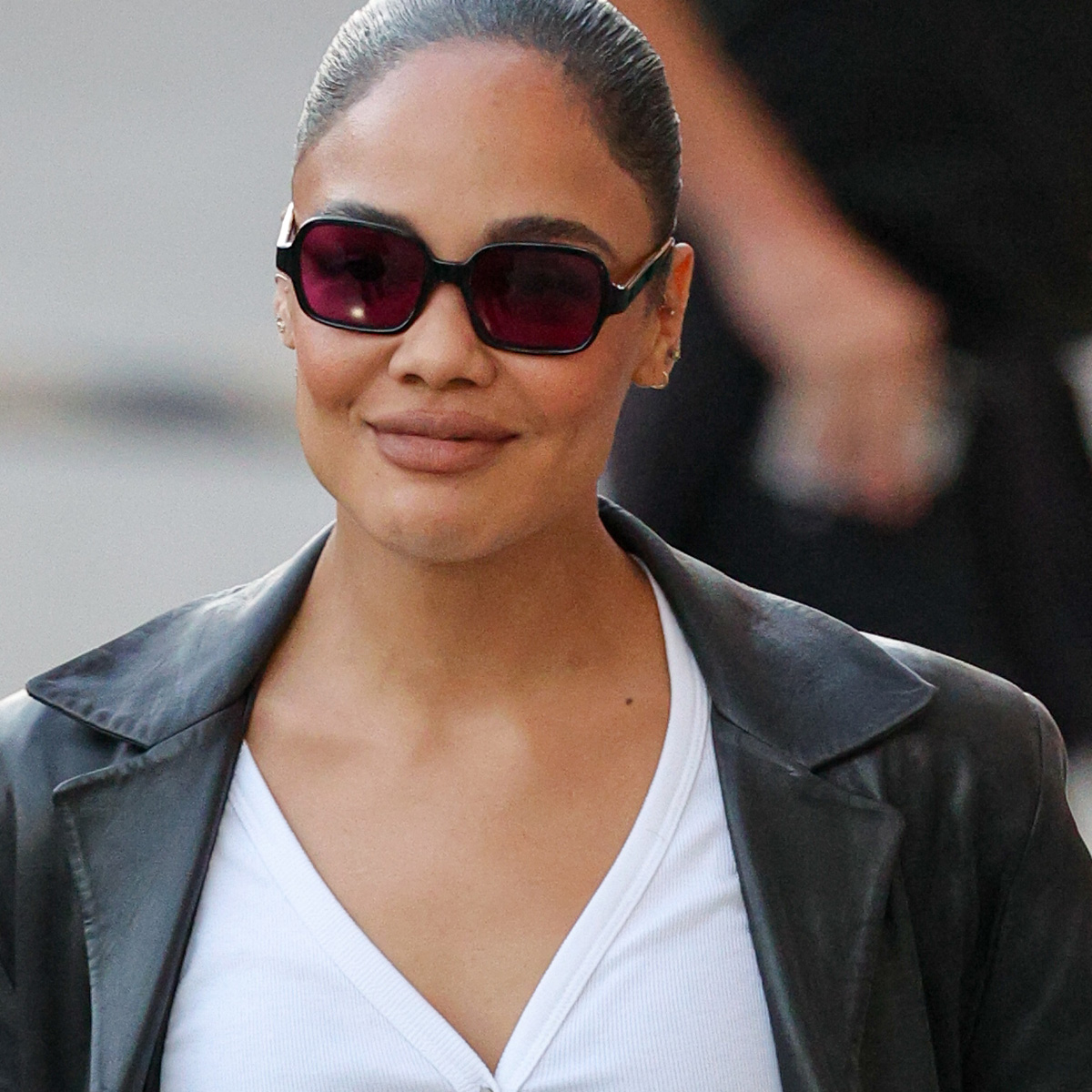 Anyone Can Wear a Cardigan, But Only Fashion People Wear Them Like *This*
Anyone Can Wear a Cardigan, But Only Fashion People Wear Them Like *This*Take note.
-
 5 Street Style Trends From Milan Fashion Week That Will Be Everywhere This Fall
5 Street Style Trends From Milan Fashion Week That Will Be Everywhere This FallTake notes.
-
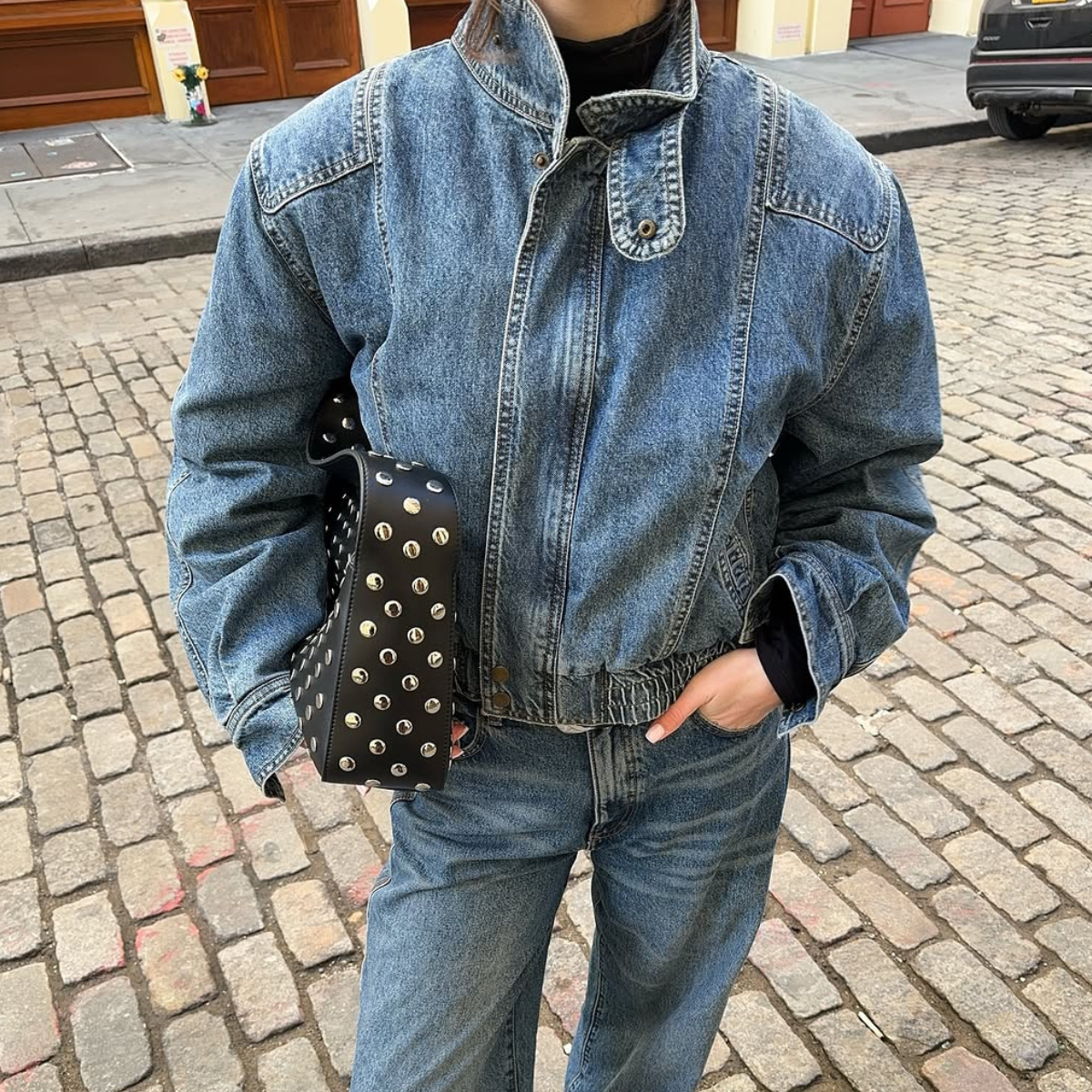 This Dated Denim Pairing Is Suddenly the Chicest Way to Wear Jeans for Fall 2025
This Dated Denim Pairing Is Suddenly the Chicest Way to Wear Jeans for Fall 2025Easy and stylish.
-
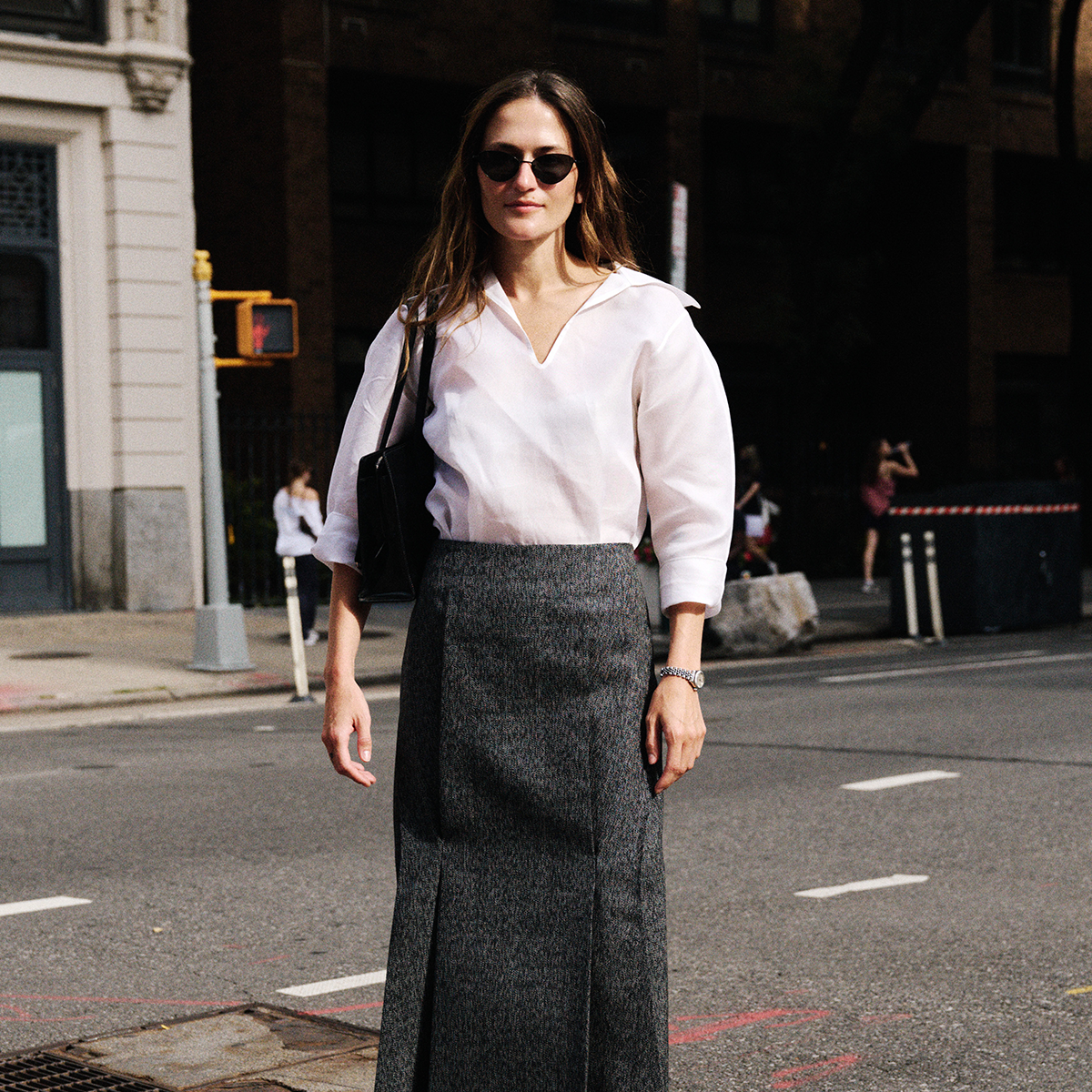 EverythingBest Knockoff Luxury Clothing Editors Saw, Wore, Did, and Ate During NYFW
EverythingBest Knockoff Luxury Clothing Editors Saw, Wore, Did, and Ate During NYFWLet's dive in, shall we?


